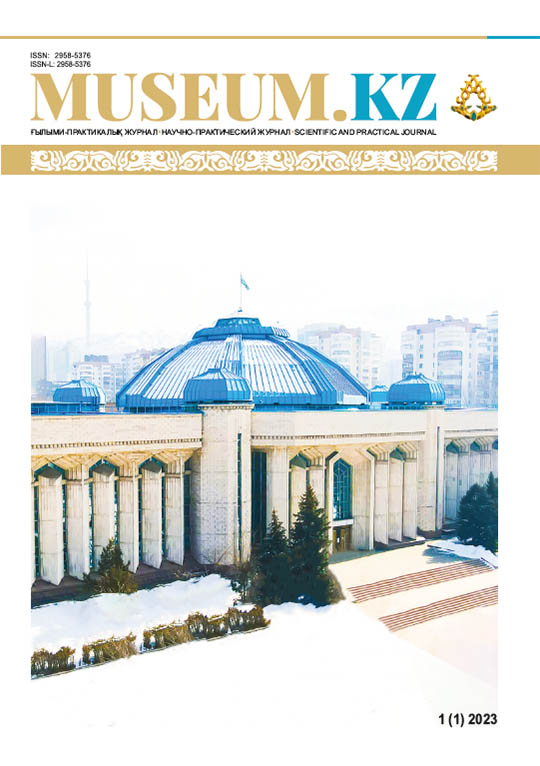TO THE INTERPRETATION OF THE HIGH ART SUBJECTS OF THE KANGJU STATE
DOI:
https://doi.org/10.59103/muzkz.2023.01.06Abstract
The publication dedicated to the historical, cultural and artistic interpretation of unique artifacts of the Kangju period art of the (1st century BC - 2nd century AD) from Southern Kazakhstan. First time in the archaeology of Kazakhstan, in a catacomb burial of Kylyshzhar burial ground, two middle horn-plates on the handle of a bow with plots of social and semantic-ritual content, performed by highly artistic engraving on horn, were discovered.The first relates to the noble Kangju’s hunt for arkhar. The first is related to a nobleman’s arkhar hunt, showing an oriental-looking horseman in a low jockey’s pose on a mare, firing a bow while hunting animals driven into a long pursuit. The archer has regalia of power, is armed with a bow and its auxiliary attributes (a spare bow, a hard-bodied gorit-jacket with a set of fighting arrows). The second plot connected with the hunting of a group of argali by a mythical polymorphic creature “bear-lion”: the animals seek to elude the “beast”, which has grabbed one individual in a rush and is ready to torment it. Both compositions unite hunting into a sacral action in which a man (a mounted rider with high authority in the nomadic society with a status close to a deity), and mythical “bear-lion” (also a deity) participate as characters endowed with special social and religious functions in hunting argali - animals that embody the global deity farn (hvarna), personifying happiness, wealth, health and protection from “evil” forces among the Iranian-speaking peoples of Central Asia and South Kazakhstan.The high level of artistic execution of the drawings places the horn plates with engraved subjects among the true masterpieces of the fine arts of the Kangju state. The archaeological complex and historical and cultural indicators allow us to determine the chronology of the works within the 1st century BC - 2nd century AD.Materials and methods. Materials of the research were artifacts from burial mound No14, Kylyshzhar burial mound located near Saryaryk village of Ordabasin district, Turkestan region, from the archeological fund of the State Historical Museum of the Republic of Kazakhstan. The funerary equipment is represented by bladed weapons - an iron petiole sword and dagger with stone tips, clothing accessories - two iron buckles and iron three-blade petiole arrowheads, which were in a leather quiver presented by two middle horn-plates on the bow hilt with social and semantic-ritual subjects, made with highly artistic engravings on horn. A formal typological method of investigating the iconography of the images, supplemented by stylistic analysis, was applied to the study of the overlays. A comparative method used to identify common and special features of the artefacts. In addition, historical and archaeological links have been identified using the historical-comparative method. The chronological attribution was carried out using relative and absolute dating. Written sources, archival materials and field reports were used in the study.







